The Wiener Looping will be one of the most spectacular rides in the Wiener Prater. With three inversions, a top speed of 82km/h, several twists and turns and an over vertical first drop, this roller coaster has everything it takes to become a new highlight in Vienna.
Wiener Looping
The Wiener Looping is in many respects a groundbreaking project for the Vienna Prater.
Our need was a roller coaster that runs with short single cars and is thus constantly in motion. The simple reason for this is that a large roller coaster train takes longer to load and meanwhile stands in the station.
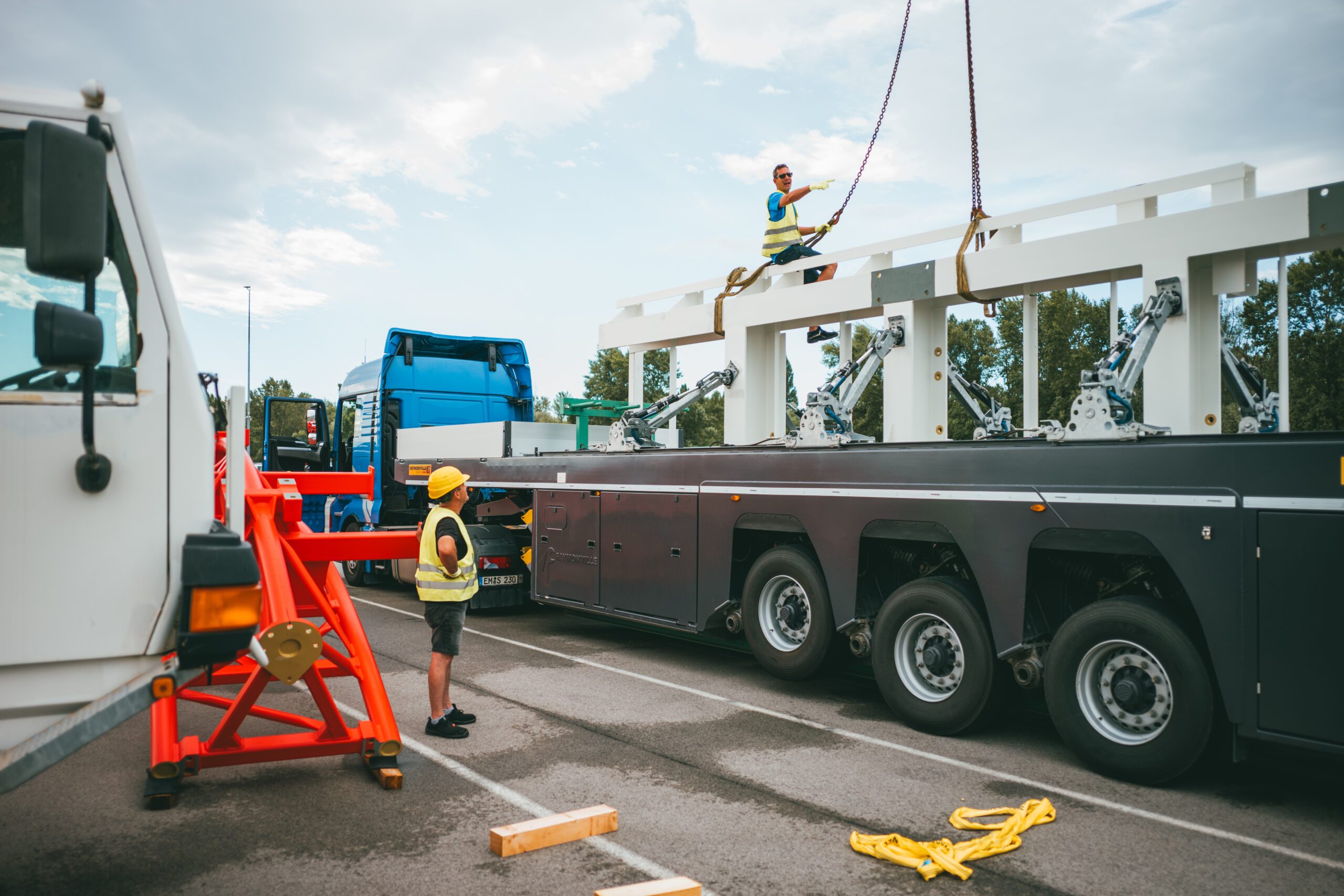
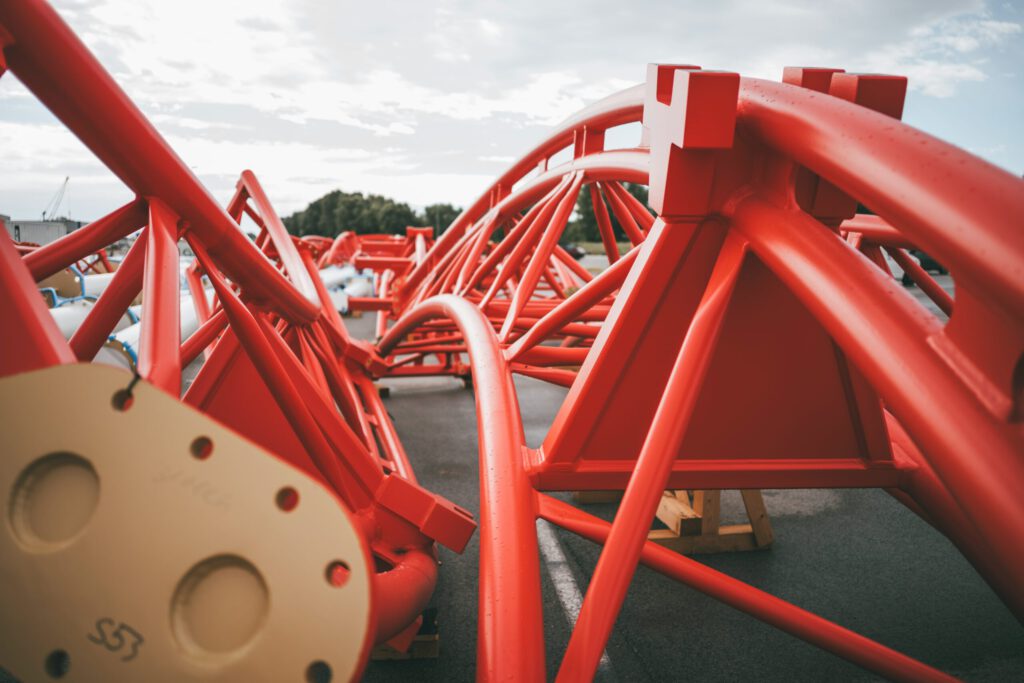

Single cars offer a higher frequency and thus an activating effect for visitors. This in particular is important because, unlike a visit to an amusement park, in the Vienna Prater you pay per ride and attractions are often also operated by different entrepreneurs. So the different attractions are always in a certain competition with each other.
A roller coaster with short cars is always in motion and is more likely to motivate visitors to want to ride. In our case, the choice fell on the German manufacturer Mack Rides, which is one of the best manufacturers of amusement rides worldwide. With the „Big Dipper“ model, Mack Rides offers a vehicle design that matched our requirements.
The Location
A big challenge is the location. Due to the success of the Vienna Prater, more and more areas have been developed and built on since the reconstruction after 1945. Space for new attractions is missing. In addition, the Vienna Prater is divided into different smaller plots, on which entrepreneurs built their attractions.
These plots are often simple and square. In the case of the area seen for the Vienna Looping, the plot has been through several changes over the years. It has been re-subdivided several times, overwritten and built on again and again. The result is a building plot that is initially only conditionally suitable for the construction of a roller coaster.

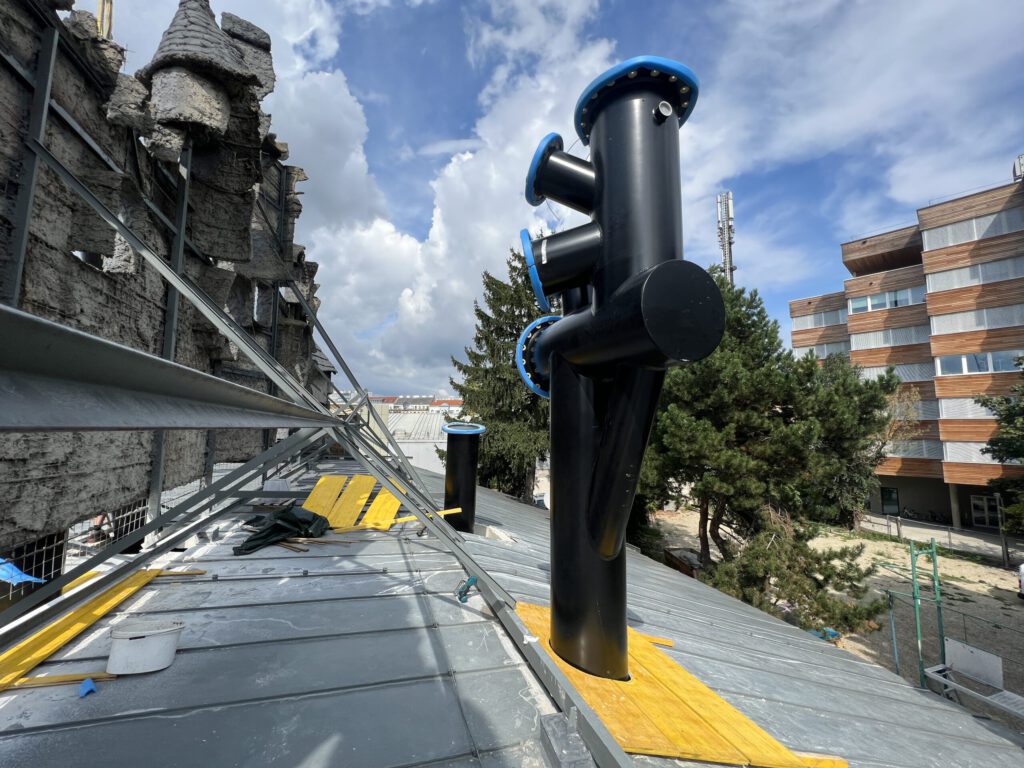
This challenge has contributed its part to the current track design of the Vienna Looping. Unique in these dimensions is also the development and overbuilding of public areas. The track leaves the plot in some places, crosses a street, and even links a second plot together.
In fact, the Vienna Looping itself has a rather untypical layout, but in combination with the spatial conditions on site, it is perfectly integrated into the surroundings.
A difficult location therefore always offers the potential for creative solutions and special riding experiences away from the standard.
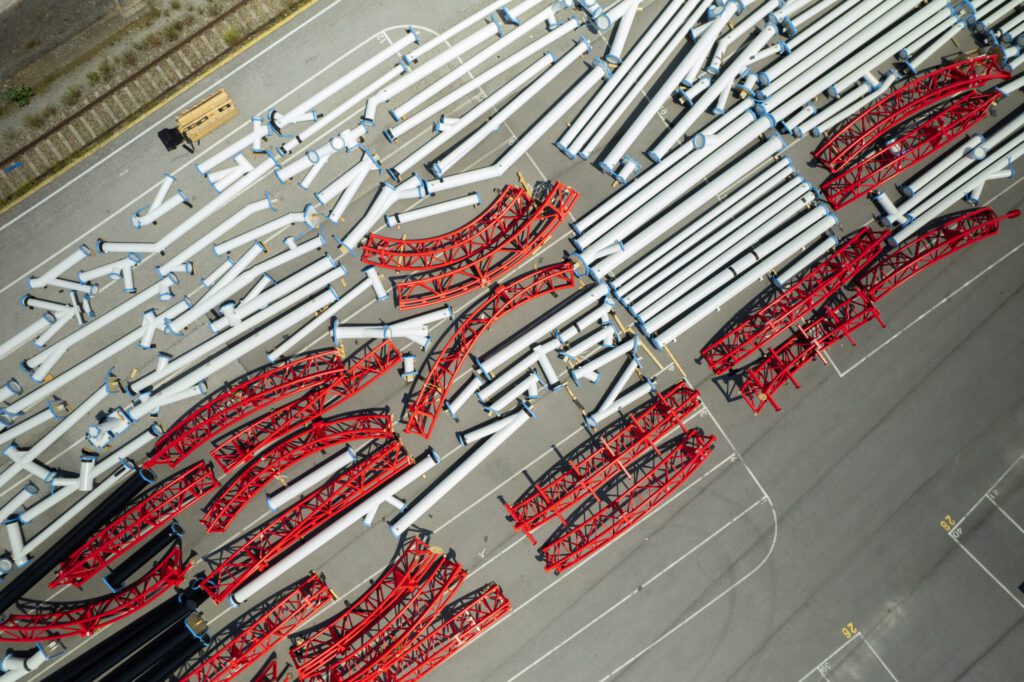
The Layout
When it comes to limited space, two things are particularly unfavourable in roller coaster construction: the lifthill, on which the car is carried to the highest point, and the final brake run, which is used to reduce the car‘s speed to the end of the track.
Both elements are typically a long straight piece of track. These elements add little to the actual ride experience, but take up a lot of space. Ideally, this space is better be used for the actual ride experience itself. Therefore, in this design, the lifthill leads away from the main area to make space for an eye catchting layout, but also the final brake is placed rather high for a reason: the elevated position of the final brake ensures a lower entry speed, resulting in a shorter braking distance and thus requires less space.
The fun part about the layout
In the design of the track, the idea was to combine as many spectacular ride elements as possible in an optimized way and with the limited space available. The car leaves the station in a left turn and get‘s up the lifthill to a height of 32 meters. After a panoramic curve, the car stops just before the first drop and offers a fantastic view over Vienna and the Vienna Prater. Then, the car starts moving again and plunges – more than vertically with an inclination of 91° – into the depth.
In contrast to most roller coasters, the first drop of the Wiener Looping doesn‘t go straight to the ground, but finishes in a “double down” .
The double down is a popular element to make a descent into the depths even more interesting. In our special case, we combine an over-vertical first drop with a following camelback.

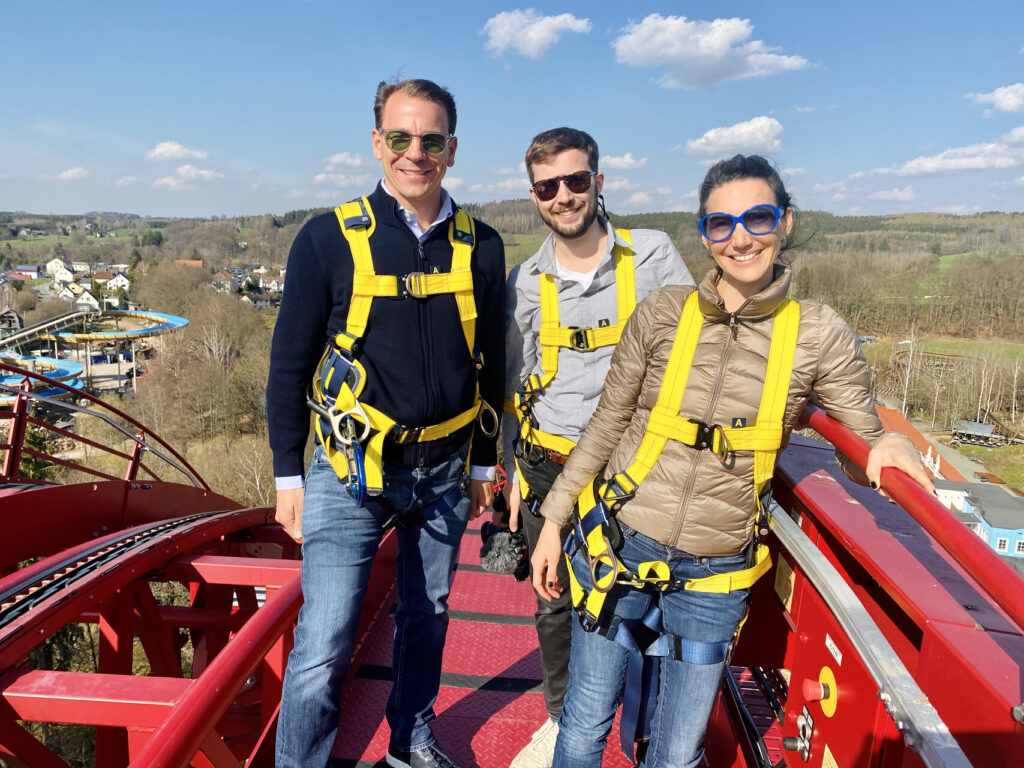
This hill offers the airtime beloved by roller coaster fans and provides the feeling of being lifted out of the seat as you pass over it.
This untypical but quite reasonable first drop is also based on the special space requirements on site: right underneath the first drop is a ghost train located as an existing object, which had to be taken into account during the planning.
The hill back to the actual plot offers a spectacular view of the tangle of rails that now has to be passed through. With a top speed of 82 km/h at the lowest point of the track, the guests ride up again into the so called “Banana-Roll“, to make a turn before the plot ends.
The ride element is similar to an inverted top hat, but with the top tilted inwards. The curved shape seen from the side gives this ride figure its name.
The up-side-down change of direction is followed by the classic of every roller coaster: the loop. Needless to say, this looping isn‘t just normal looping by any means.
Here, the special space conditions have led to a rather unique solution. In contrast to the conventional looping, which has its tightest radius at the apex, the overhead ride of the Vienna Looping is extended in length and thus offers almost 3 seconds of absolute weightlessness while going up-side-down.

With its large radius, the loop leaves enough space to completely circle around the final curve that appears later on the ride.
The exit immediately leads into the next spectacular transition. In a right turn, the track ascends steeply and with a 104° lateral inclination into a hill. While crossing the hill, the track turns 284° to the left and ends in the next overhead descent.
Whereas before there was the gentle feeling of weightlessness, this element literally lifts the passengers out of the car during the twist. A spectacular flight maneuver aptly named „Monsieur-Sky-Roll“ (quote: Stefan Sittler-Koidl).
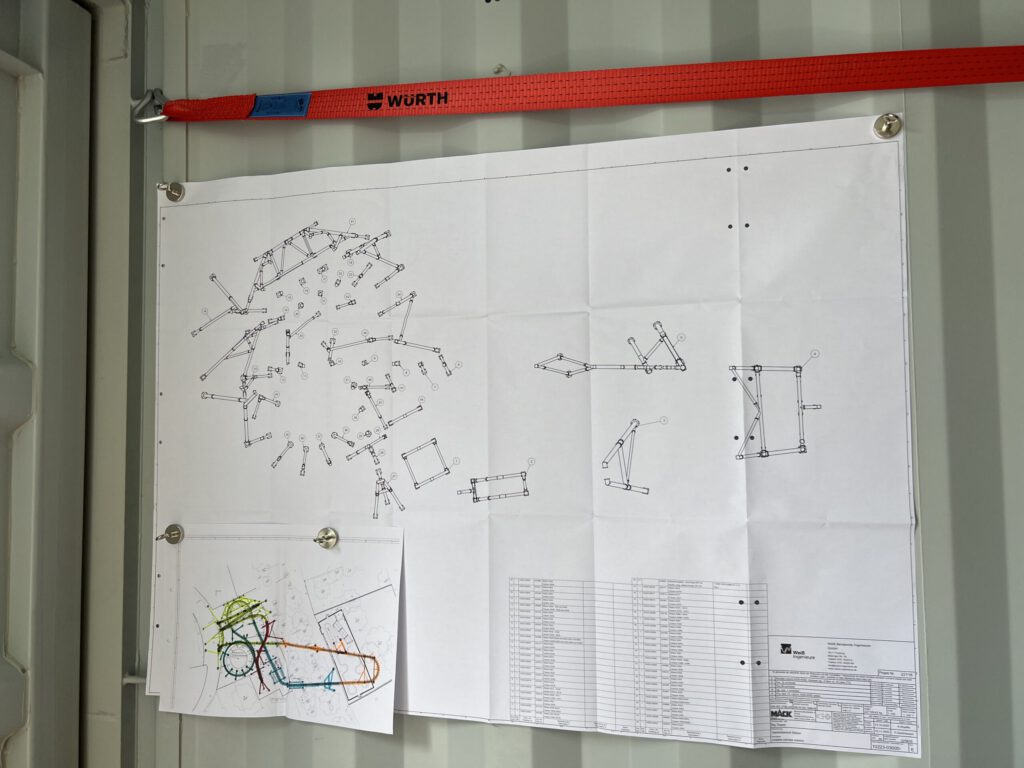

The now remaining lowest point of the track is passed and ends into a combination of an overbanked turn and a very forcefull helix.
Another twist follows at a height of 12 meters and leads into the final curve, which now passes through the center of the looping.
The highly twisted exit from the final curve provides a last moment of surprise, which takes up the principle of the Danish roller
coaster Daemonen. Here, the entry into the final brake is a small up-hill that is quickly passed. During the crossing of which, passengers are once again briefly lifted out of their seats in surprise – and excitedly land in the final brake.
As an enthusiastic roller coaster fan, I enjoy the atmosphere that dominates the station when the passengers just entering are still completely pumped with adrenaline.
This feeling is already being transferred to the passengers still waiting and is another reason why the track from the final brake back to the station is kept as short as possible here.